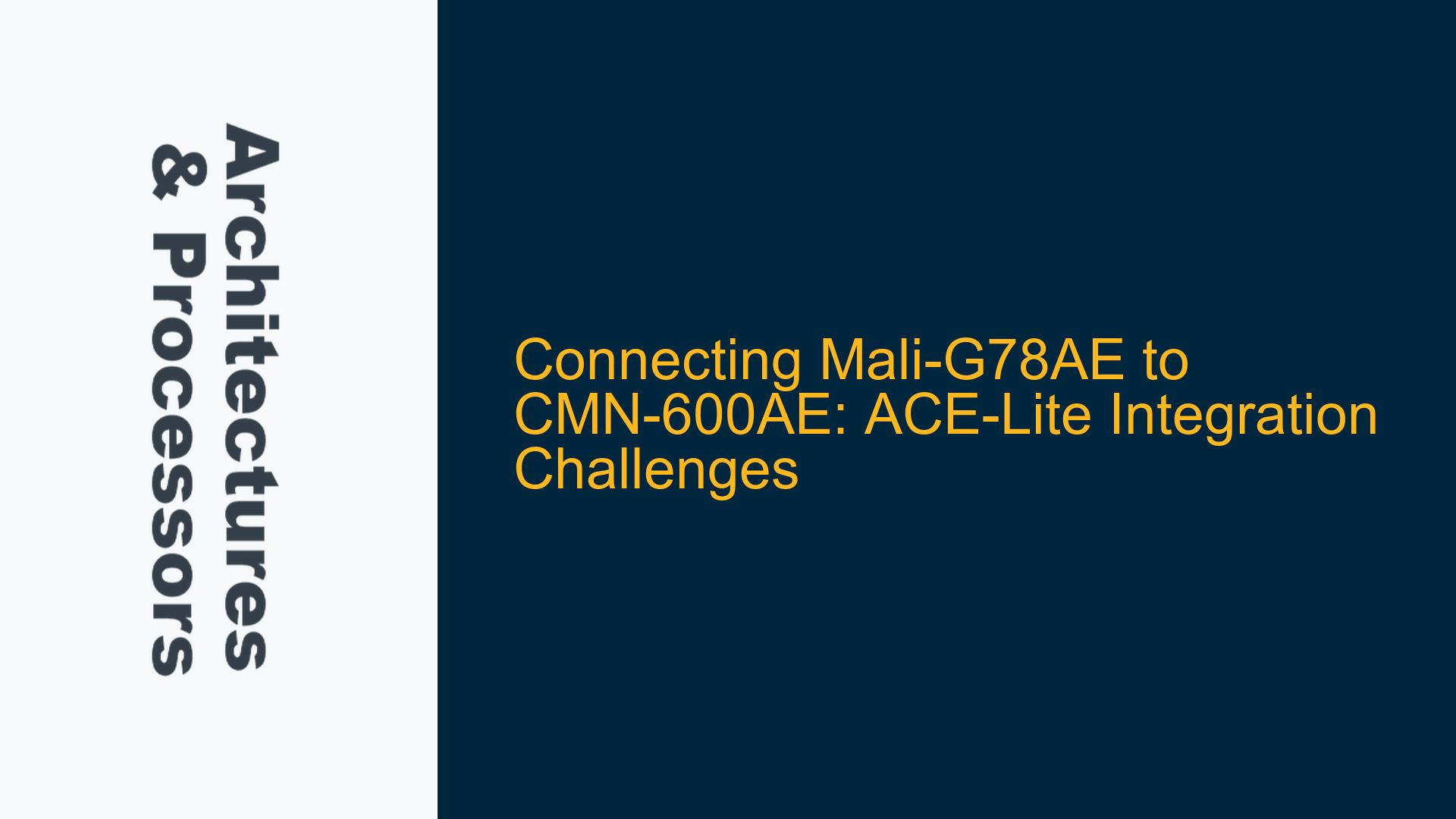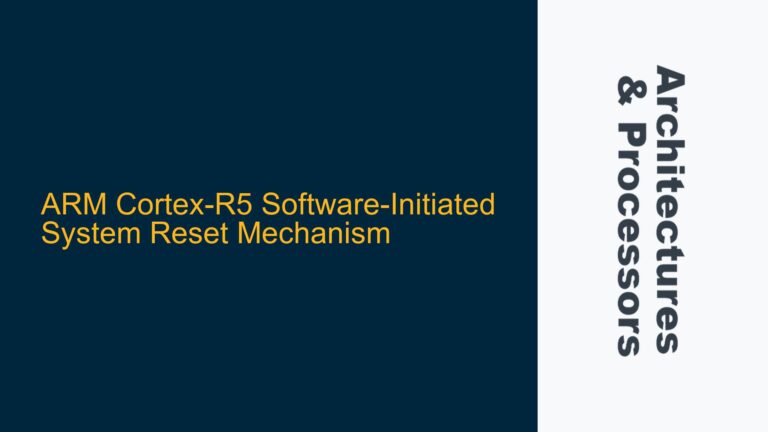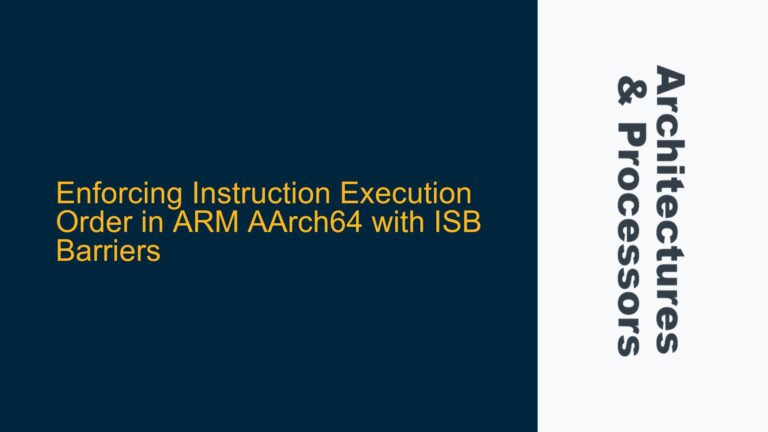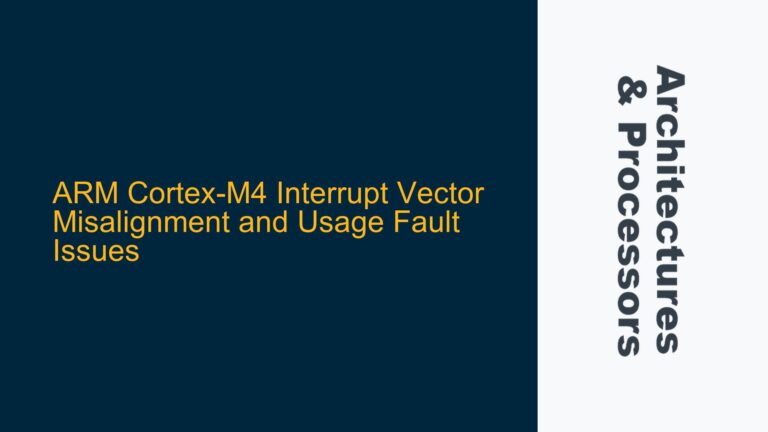Mali-G78AE and CMN-600AE ACE-Lite Interface Configuration
The integration of the Mali-G78AE GPU with the CMN-600AE interconnect involves configuring the ACE-Lite (AXI Coherency Extensions Lite) interface to ensure proper communication and coherency management. The Mali-G78AE is a high-performance GPU that supports up to 8 ACE-Lite connections, depending on the number of slices configured. The CMN-600AE, on the other hand, is a configurable mesh interconnect that supports I/O coherent requester nodes, each capable of handling up to 3 channels. The primary challenge lies in mapping the multiple ACE-Lite connections from the Mali-G78AE to the CMN-600AE’s I/O coherent requester nodes, ensuring that the system maintains coherency and optimal performance.
The Mali-G78AE’s ACE-Lite interface is designed to handle memory transactions that require coherency, such as those involving shared data between the GPU and other system components like CPUs. The CMN-600AE, being a coherent interconnect, must efficiently manage these transactions to prevent data corruption and ensure that all components in the system have a consistent view of memory. The complexity arises from the fact that the Mali-G78AE can have up to 8 ACE-Lite connections, while each I/O coherent requester node in the CMN-600AE supports only 3 channels. This discrepancy necessitates a careful mapping strategy to ensure that all ACE-Lite connections are properly handled without overloading any single node in the CMN-600AE.
Potential Misconfiguration of ACE-Lite Channels and CMN-600AE Nodes
One of the primary causes of integration issues between the Mali-G78AE and CMN-600AE is the potential misconfiguration of the ACE-Lite channels and the CMN-600AE’s I/O coherent requester nodes. The Mali-G78AE’s ACE-Lite interface is designed to support multiple channels, each of which can handle independent memory transactions. However, the CMN-600AE’s I/O coherent requester nodes are limited to 3 channels each. If the ACE-Lite channels are not properly mapped to the CMN-600AE nodes, it can lead to channel overloading, where a single node is forced to handle more transactions than it is designed for, resulting in performance bottlenecks and potential coherency issues.
Another potential cause of integration problems is the incorrect configuration of the CMN-600AE’s mesh topology. The CMN-600AE is a highly configurable interconnect that allows for various mesh topologies to be implemented, depending on the specific requirements of the system. If the mesh topology is not optimized for the Mali-G78AE’s ACE-Lite interface, it can lead to inefficient routing of transactions, increased latency, and reduced overall system performance. Additionally, the CMN-600AE’s coherency protocol must be correctly configured to handle the Mali-G78AE’s ACE-Lite transactions, ensuring that all memory accesses are properly synchronized and that data coherency is maintained across the system.
A third potential cause of issues is the lack of proper synchronization mechanisms between the Mali-G78AE and the CMN-600AE. The ACE-Lite protocol relies on memory barriers and cache maintenance operations to ensure that all components in the system have a consistent view of memory. If these synchronization mechanisms are not properly implemented, it can lead to data corruption and coherency violations. For example, if a memory barrier is not correctly placed in the transaction sequence, it can result in the Mali-G78AE accessing stale data, leading to incorrect rendering or computation results.
Optimizing ACE-Lite Channel Mapping and CMN-600AE Configuration
To address the integration challenges between the Mali-G78AE and CMN-600AE, a systematic approach to optimizing the ACE-Lite channel mapping and CMN-600AE configuration is required. The first step is to carefully map the Mali-G78AE’s ACE-Lite channels to the CMN-600AE’s I/O coherent requester nodes. This involves analyzing the transaction patterns of the Mali-G78AE and distributing the ACE-Lite channels across multiple nodes in the CMN-600AE to avoid overloading any single node. For example, if the Mali-G78AE is configured with 8 ACE-Lite channels, these channels can be distributed across 3 nodes in the CMN-600AE, with each node handling up to 3 channels. This ensures that no single node is overwhelmed with transactions, maintaining optimal performance and coherency.
The second step is to optimize the CMN-600AE’s mesh topology to efficiently route transactions between the Mali-G78AE and other system components. This involves configuring the mesh topology to minimize latency and maximize bandwidth for the Mali-G78AE’s ACE-Lite transactions. For example, the CMN-600AE can be configured with a hierarchical mesh topology, where the Mali-G78AE is connected to a local mesh that is then connected to the main mesh. This reduces the number of hops required for transactions, reducing latency and improving overall system performance.
The third step is to ensure that the CMN-600AE’s coherency protocol is correctly configured to handle the Mali-G78AE’s ACE-Lite transactions. This involves setting up the appropriate coherency domains and ensuring that all memory accesses are properly synchronized. For example, the CMN-600AE can be configured with separate coherency domains for the Mali-G78AE and other system components, ensuring that the Mali-G78AE’s transactions are properly isolated and synchronized. Additionally, memory barriers and cache maintenance operations must be correctly placed in the transaction sequence to ensure that all components have a consistent view of memory.
Finally, it is essential to thoroughly verify the integration of the Mali-G78AE and CMN-600AE through simulation and testing. This involves creating a comprehensive testbench that covers all possible transaction scenarios, including corner cases and stress tests. The testbench should include both functional and performance tests to ensure that the system meets all coherency and performance requirements. Additionally, the testbench should include mechanisms for monitoring and debugging coherency violations, allowing for quick identification and resolution of any issues that arise during testing.
In conclusion, the integration of the Mali-G78AE with the CMN-600AE requires careful configuration of the ACE-Lite channels, optimization of the CMN-600AE’s mesh topology, and proper implementation of synchronization mechanisms. By following a systematic approach to mapping, configuration, and verification, it is possible to achieve a robust and efficient integration that meets the performance and coherency requirements of the system.






